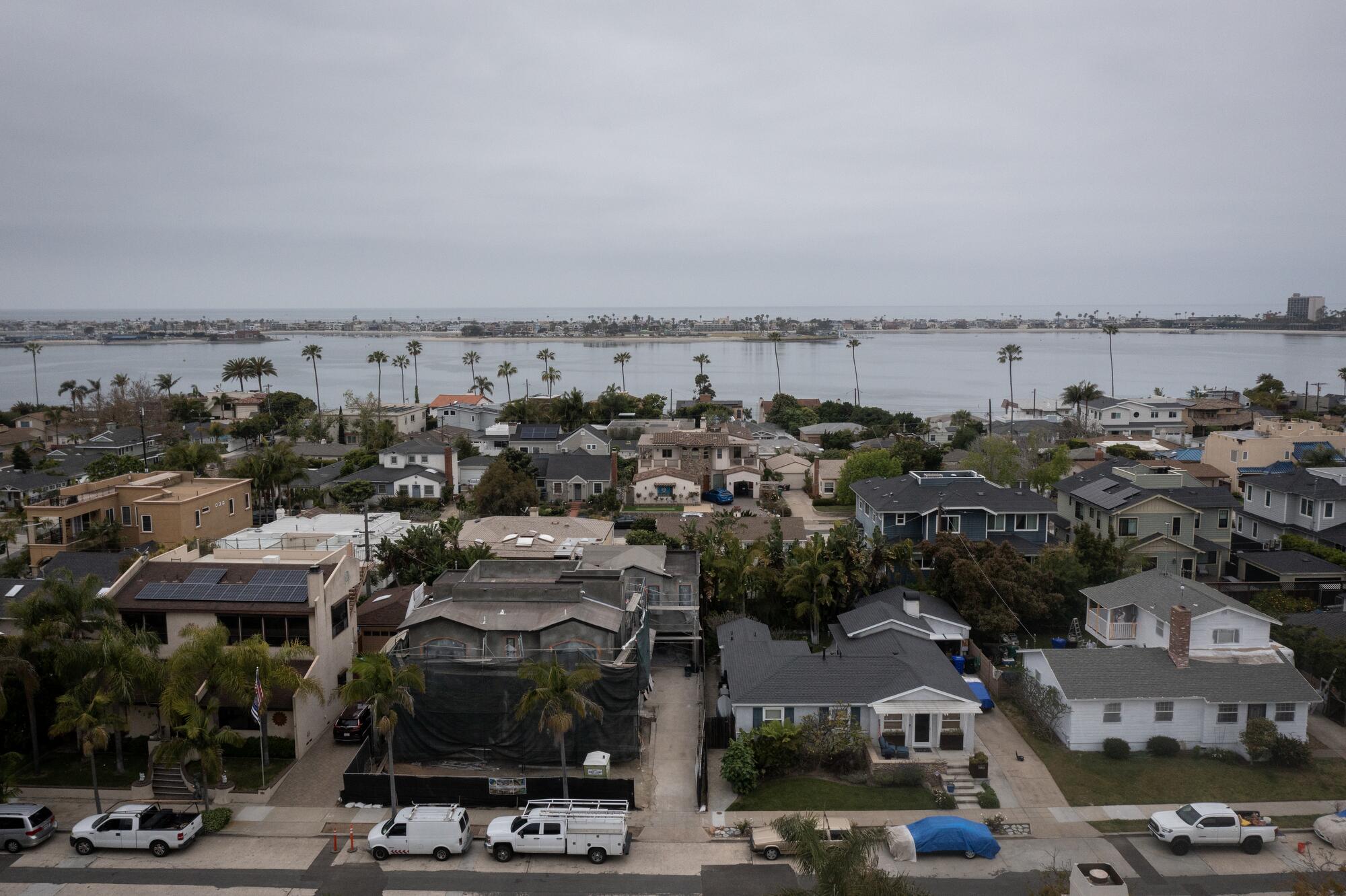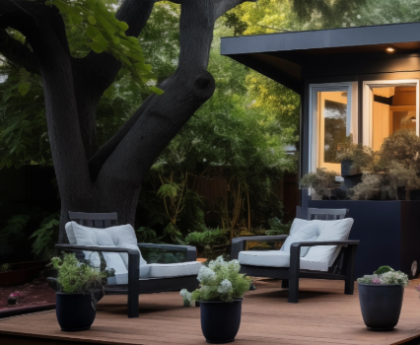SAN DIEGO —
A San Diego zoning loophole is pitting neighbors against one another in Crown Point and making every coastal community in the city, from Ocean Beach to La Jolla, vulnerable to similar battles.
All across the city’s coastal zone, large backyard apartments can be built directly next to a neighboring property with no setback or buffer zone — even though the City Council outlawed doing so more than two years ago.
This story is for subscribers
We offer subscribers exclusive access to our best journalism.
Thank you for your support.
Because the new rule can’t take effect in the city’s coastal neighborhoods without a second approval from the California Coastal Commission, it’s so far only taken effect in inland neighborhoods east of Interstate 5.
So backyard apartments — which many call granny flats, and which city officials call accessory dwelling units — are still being built directly on property lines in coastal neighborhoods, including at least three in Crown Point.
The loophole is creating so much angst at one location in Crown Point that a homeowner is refusing to allow his neighbor’s contractor to enter his yard to finish the exterior of an ADU being built directly on the property line.
And the property owner, Marc Umemoto, is installing cameras in case the contractor sneaks in and completes the work at night or some other time.
Umemoto says the new ADU will wall off his yard like a prison, keeping natural light and air out and changing the entire character of his home just a few blocks from Mission Bay.
“The city is pitting neighbor against neighbor,” he said last week at his home on Promontory Street.
Umemoto says the fact that his neighbor needs to use his yard to complete construction is strong evidence the city was crazy in 2019 when it decided ADUs could be built directly on property lines.
“The contractor has no way to finish the project without trespassing,” Umemoto said.

Marc Umemoto looks toward his neighbor’s property where an accessory dwelling unit is being built against his property in Crown Point on Thursday, May 2, 2024.
(Ana Ramirez/The San Diego Union-Tribune)
The city’s goal with that 2019 decision was to eliminate hurdles to construction of ADUs, which city officials call a key solution to the local housing crisis. Not requiring setbacks made ADUs more feasible on smaller or unusually configured properties.
But public backlash prompted the city to retreat in 2022 and update its rule to begin requiring minimum setbacks of 4 feet for ADUs built next to residential properties.
Because those setbacks aren’t yet required in the coastal zone, Umemoto and his neighbor, Heidi Martin, are locked in a dispute that has steadily escalated this spring.
Umemoto and some other coastal residents have lobbied city officials to block construction of the ADU, contending the city shouldn’t wait for the law to take effect in the coastal zone.
Martin says those efforts have gone beyond lobbying. Her contractor has been heckled, and some residents have vowed to do everything possible to get the ADU torn down.
“Who are these people, and what are they doing?” she said. “This should not be happening. It’s borderline harassment. Our construction workers are afraid.”
Martin said she understands Umemoto’s concerns, but she and her husband have followed city regulations carefully and are simply building what is allowed.
She notes that the ADU is being built above an existing garage that already touches Umemoto’s property line. And she said it’s common in densely populated Crown Point for structures to be built next to property lines.
“You can walk the neighborhood and see garages on property lines all over,” she said.
She said the new city rule, if it were in effect on the coast, would have allowed the second-story ADU but required a 4-foot setback. So the second story would have been less wide than the bottom story, creating space between the ADU and Umemoto’s property line.
Much of the backlash against ADUs on the coast has been fueled by concerns from residents that property owners will use them as vacation rentals. Martin says her 25-year-old daughter, a local nurse, will live in the new ADU.
She said her daughter, like many people in their 20s, has struggled to find affordable in housing in San Diego. And affordable housing in coastal neighborhoods like Crown Point is even more scarce.

Accessory dwelling units being built right up against property lines are causing neighborhood battles in Crown Point.
(Ana Ramirez/The San Diego Union-Tribune)
Umemoto’s attorney, Scott Scheper, contends in emails to the city that the new rule should be enforced despite the current status at the Coastal Commission.
“The absence of Coastal Commission certification of the loosened requirements in the adopted ADU ordinance does not absolve owners from compliance with long-standing San Diego Municipal Code side setback requirement,” wrote Scheper, who is threatening to file a lawsuit if the city doesn’t act.
He is essentially arguing that a property owner’s obligation to comply with the city’s municipal code is constant and not dependent on the Coastal Commission, and that the city’s municipal code says 4-foot setbacks are required for ADUs built next to homes.
In a response to Scheper and Umemoto, city officials flatly disagreed.
“The Land Development Code regulations adopted by the City Council are not effective in areas within the Coastal Overlay Zone until the California Coastal Commission certifies the amendments,” wrote Raynard Abalos, deputy director of the city’s Development Services Department.
“I have determined that the ADU complies with the applicable setback requirements of the ADU regulations that were certified and effective in the Coastal Overlay Zone when the project was deemed complete,” Abalos wrote.
City officials often express frustration with how slowly they get approvals from the Coastal Commission, which must handle new legislation from hundreds of California cities and which only meets three days each month.
The city’s retreat on ADU setbacks was approved by the City Council in April 2022 but was not approved by the commission until last month.
But even that April 12 approval isn’t final, because the ADU setbacks are part of a larger package of housing-related reforms, and the commission had some concerns about the broader package that prompted it to propose some changes. The City Council must now debate and possibly approve those proposed changes.

Heidi Martin, whose ADU project is being fought by her neighbor Marc Umemoto, says she and the construction team she hired have faced “borderline harassment” despite following city rules.
(Ana Ramirez/The San Diego Union-Tribune)
A spokesperson said the commission does not expect approval of those proposed changes to be controversial.
“The city of San Diego will now have to adopt these modifications, which should be routine,” said the spokesperson, Joshua Smith.
But a city planning official said Friday that the process “adds additional months.”
The official, housing policy program manager Seth Litchney, said the Planning Department expects to present the council with the proposed Coastal Commission changes sometime in mid-June.
“If the Council adopts the modifications, the Coastal Commission still needs to certify the Housing Action Package at its July meeting before the regulations take effect in the Coastal Zone,” Litchney said.
And the delay could be longer if the council balks at some of the commission’s proposed modifications, which aren’t related to the city’s retreat on ADU setbacks.
ADUs made up just over 12 percent of the new housing projects approved by the city in 2022, the last year for which data is available. Of the 5,314 projects approved, 651 were ADUs.
The ratio was even higher in 2021, the last full year when no setbacks were required. In 2021, 871 of the 3,650 units approved were ADUs — just under 24 percent.



